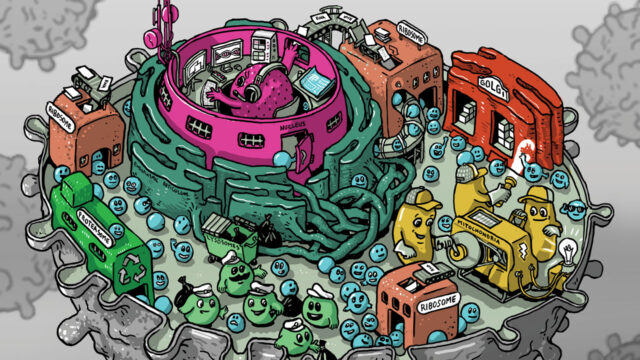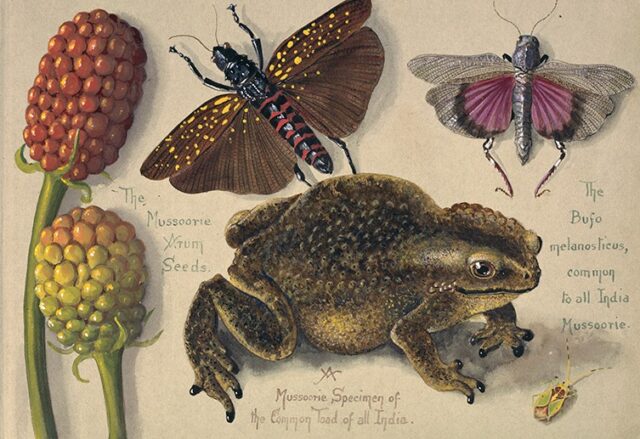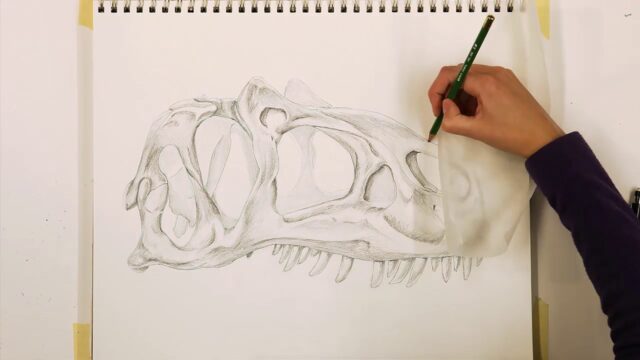
In the world of science, effective communication is paramount. Visual communication plays a fundamental role, whether conveying an atom’s intricacies, unraveling a gene’s mysteries, exploring a crystal’s structure, or marveling at the vast expanse of a galaxy.
The marriage of art and science gives birth to scientific illustration, a discipline at the intersection of these seemingly opposite fields. This article will delve into the significance of scientific explanation in sharing discoveries, ideas, and observations and how it enhances our understanding of complex scientific concepts.
The Power of Scientific Illustration

Scientific illustration, as a method of communication, allows for the presentation of complex ideas, intricate details, and elaborate theories in a visually engaging and informative manner. Even if you’re unfamiliar with scientific illustration as a discipline, chances are you have encountered its wonders numerous times. Think back to your science textbooks, the captivating museum exhibits, or the informative charts in your doctor’s office.
The capacity for effective communication through art is a potent instrument for lowering barriers and increasing comprehension of scientific concepts. Unlike technical jargon, which can often be daunting and inaccessible to many, scientific illustrations bridge the scientific community and the general public. By translating complex concepts into visual representations, these illustrations enable a broader audience to comprehend and appreciate scientific knowledge.
The Role of Scientific Illustrators
At the heart of scientific illustration are the talented artists and illustrators who bring scientific concepts to life. These individuals possess a unique blend of artistic skills and scientific knowledge, allowing them to depict complex subjects with precision and clarity accurately. By leveraging their aesthetic sensibilities and technical expertise, scientific illustrators transform abstract ideas into tangible visuals.
Scientific illustrators employ a variety of mediums, including traditional illustration techniques, digital art, and even multimedia platforms. Through meticulous attention to detail and a deep understanding of the subject matter, they create scientifically accurate and visually captivating illustrations. Whether it’s depicting the intricate structure of a cell, illustrating the stages of embryonic development, or visualizing the interactions between molecules, scientific illustrators play a vital role in understandably conveying scientific information.
Enhancing Accessibility and Engagement

One of the critical advantages of scientific visuals is their ability to enhance accessibility and engagement. Scientific concepts can often be complex and challenging, particularly for non-experts. However, when accompanied by visually compelling illustrations, these concepts become more approachable and easier to comprehend.
Scientific illustrations have a wide range of viewers due to their clarity and concision, from students and teachers to researchers and professionals. The power of pictures should be considered, as they have the potential to transcend language barriers and convey complex ideas with minimal textual explanation. Moreover, scientific illustrations can create interactive experiences, such as animations and simulations, further enhancing engagement and facilitating active learning.
Applications in Education and Research
Scientific illustration has widespread applications in various domains, particularly education, and research. In educational settings, illustrations are indispensable tools for teachers and students alike. They facilitate effective teaching by simplifying complex concepts, aiding retention, and promoting active learning. Illustrations can bring textbooks to life, transforming mundane pages of text into vibrant visual journeys of discovery.
Scientific illustrations play a crucial role in presenting findings, experimental setups, and data analysis in research. They enable researchers to convey their work to a broader scientific community and facilitate knowledge sharing. Illustrations can simplify intricate methodologies, highlight key findings, and provide a visual context for data interpretation. By using graphics effectively, researchers can enhance the impact of their work and ensure that it reaches a broader audience.
The Intersection of Art and Science
Scientific illustration is a testament to the harmonious coexistence of art and science. It breaks down the traditional dichotomy between these two disciplines and demonstrates their symbiotic relationship. Through scientific visuals, art becomes a tool for scientific exploration and communication, while science gains a visually captivating expression.
Scientific illustrators utilize their creative skills to create visually appealing illustrations that capture the essence of the subject matter. Artistic elements such as composition, color, and texture are carefully employed to convey scientific information effectively. At the same time, they maintain scientific accuracy, ensuring that the illustrations faithfully represent the scientific concepts they depict.
Moreover, scientific illustration allows for integrating creativity and imagination into the scientific realm. It promotes a sense of wonder, curiosity, and new ways of visualizing scientific phenomena. By engaging the viewer on an aesthetic and emotional level, scientific illustrations ignite interest and passion for scientific exploration.
The Evolution of Scientific Illustration

Scientific illustration has a rich history that spans centuries, evolving alongside advancements in both science and art. In the early days, scientific illustrations were primarily hand-drawn, relying on skilled artists to capture the intricate details of natural specimens or scientific observations. These illustrations served as vital records and references for scientific discoveries.
With the advent of digital technology, scientific illustration has experienced a transformation. Digital tools and software now offer unprecedented opportunities for creating highly detailed and interactive scientific descriptions. Three-dimensional modeling, animation, and virtual reality have opened new avenues for visualizing complex scientific concepts and engaging audiences in immersive learning experiences.
The Future of Scientific Illustration
The future of scientific illustration is bright, thanks to the ever-developing capabilities of modern technology. As technologies like VR and AR become more commonplace, scientific illustrators will have even more options for making their work interactive and immersive. Imagine exploring the human body in three dimensions, zooming in on cellular structures, or witnessing the intricacies of a biochemical reaction firsthand. Such advancements will revolutionize the way scientific information is communicated and understood.
Integrating artificial intelligence and machine learning into scientific illustration also opens up exciting possibilities. AI algorithms can assist in generating accurate and realistic visual representations based on scientific data, saving time and effort for illustrators. This collaboration between human creativity and technological innovation will propel scientific illustration into new frontiers.
Conclusion
Scientific illustration bridges the gap between science and the general public. It’s an effective method of spreading information because it simplifies challenging scientific ideas into appealing visual formats that anyone can understand. By combining artistry and scientific expertise, scientific illustrators illuminate knowledge, enhance understanding, and inspire curiosity.
As we learn more about the cosmos and the incredible diversity of the natural world, scientific illustration will remain an indispensable tool for sharing discoveries, inciting scientific interest, and encouraging a greater appreciation for the wonders of our world. So, the next time you see a diagram used in science, take a moment to appreciate the artistry and its profound impact on scientific communication and design.












